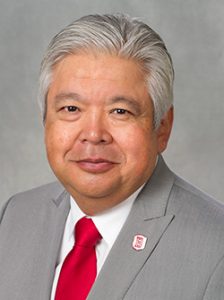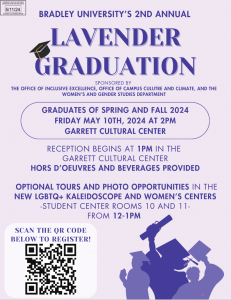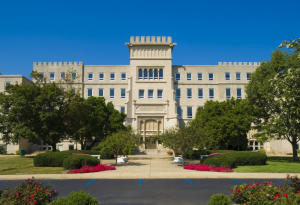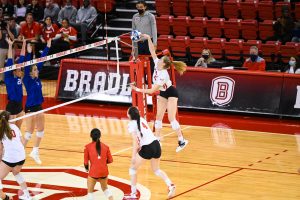Students welcomed Democratic Congresswomen Cheri Bustos and Robin Kelly to the Hilltop Tuesday to talk financing college educations.
Each year, approximately 71 percent of college students graduate with an average of $29,000 or more in student loan debt. According to the Institute for College Access and Success, student graduation debt has been steadily increasing by six percent each year since 2008.
Bustos and Kelly met with a panel of Bradley students to discuss change and brainstorm ideas they could bring back to Washington D.C.
“My son has had to defer his dream due to his student debt,” Kelly said. “We want to hear your stories and look for a solution to this.”
Senior supply chain management major Dashawn Cason said he is a first generation college student and has had to take out significant loans to attend Bradley, which will leave him with more than $40,000 in student loan debt.
“It is an investment in the next generation, but it’s also an investment in the future of our country because you need well-educated people to do a lot of the things we do,” he said.
Bustos said she and Kelly do not want students to be buried in financial burden that prevents them from achieving what they want.
“Robin and I are both firm believers that we need to make sure college is affordable, accessible and that when you get out of school, you are not faced with a debt that is such a heavy weight around your neck that you can’t figure out your path forward financially,” Bustos said.
The Free Application for Federal Student Aid (FAFSA) was a main point of conversation for the students and congresswomen, discussing how the online form could be more conducive to students and their families.
Senior special education major Joe Waytula said coming from a single-parent household and being a first-generation college student presented many FAFSA questions and student loans concerns.
“Going through the [FAFSA] system is almost manipulative just because there are people like me, and also people in similar situations to myself, who don’t know anyone who went to college,” Waytula said. “So, when they’re going through these forms, they don’t know the terms that these websites are using. You either agree to all these words that you don’t know and go to college, or you just don’t.”
Senior professional sales major Liz Steinhaus echoed Waytula, saying she too is a first generation college student, and taking out a loan is a bigger deal than it is made out to be.
“As a 17 or 18-year-old, you can’t wrap your head around how much money you’re actually going to be paying,” she said.
According to Executive Director of Financial Assistance Dave Pardieck, 98 percent of Bradley students get financial help of some sort, with about 50 percent of those students receiving need-based aid. That’s a budget of approximately $45 million per year for financial aid.
Pardieck said when it comes to student loans, it is difficult for high school students looking at colleges to understand what they’ll be repaying four years down the road and whether or not their future career can support those payments.
“For a 17-year-old, you might as well just say you’ll have $1 million in debt,” Pardieck said. “There is no context for them. They’ve never paid something like that before.”
Freshman public relations major Sarah Brashear agreed with Pardieck, saying she never could have known what it would be like to pay off or even take out a loan.
“You realize it’s going to be $80,000, but you don’t realize this is what I’m going to get paid at the job [I want],” she said. “Since I’m a freshman, and I just went through the process of picking a college and all the financial aid stuff, I think what’s really important [to recognize] is how much financial aid impacts a decision.”
Bustos said she and Kelly have already begun work on expanding pell grants, federally-sponsored undergraduate grants for students of low-income families, and they have more legislative ideas in the mix.
“Another initiative [we have] is to be able to keep student loan interest rates at that 3.4 percent rate as opposed to the seven-something that is raised,” she said. “[We also want to] allow students to be able to renegotiate the interest rate on their student loans to the current rate.”
Cason said he hopes that legislators will carefully consider this problem and work toward feasible solutions. He proposed his own solution to Bustos and Kelly.
“If it’s a business model, we loan this money out [to people] and then [those people] pay it back and then some,” he said. “If it’s normal loans, that makes sense…but if it’s not seen as the whole business side of it, and we just want to invest in our nation, why don’t we just lower [the federal rates]? I know it sounds so simple, but why don’t we? It’s almost as if we’re penalizing our students.”
Bustos said Cason is right, as she and Kelly support the lowering of the federal student loan interest rate, but not everyone agrees.
“It’s a political question,” she said. “I think there’s a distinct difference when you look at a federal budget of what you consider an investment and what you consider an expense. They’re both spending money, but I can hardly think of a better investment than our kids.”








